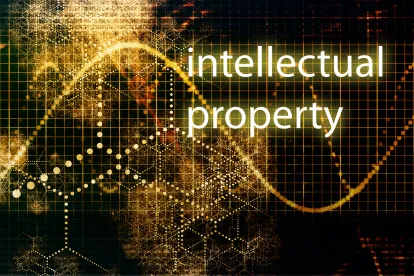In August 2018, the US Patent and Trademark Office issued its first major update to the America Invents Act Trial Practice Guide (Updated TPG) since its publication in August 2012, providing additional guidance about trial practice before the Patent Trial and Appeal Board (PTAB). Among other things, the updated sections include guidance on the use of expert testimony, considerations in instituting review, sur-replies to principal briefs, the distinction between motions to exclude and motions to strike, pre-hearing conferences and procedures for oral hearing before the PTAB.
The Updated TPG provides guidance on the appropriate use of expert testimony during a proceeding. Before the PTAB, expert testimony is appropriately used to explain issues relating to the level of skill in the art, the teachings of the prior art and how they relate to the patentability of the challenged claims, reasons to combine the teachings of references in a particular way, and objective indicia of non-obviousness. The Updated TPG acknowledges that while expert testimony can be presented to establish the scope and content of the prior art for determining obviousness and anticipation, expert testimony cannot take the place of the disclosure of the prior art, be conclusory without supporting evidence from the record, or supply a limitation that is not indisputably within the common knowledge of a skilled artisan. As a result, while expert testimony may explain the patents and printed publications, it cannot be a substitute for disclosure in the prior art reference itself.
The Updated TPG also provides guidance regarding relevant considerations when instituting review and explicitly states that the PTAB will take into account whether the same or substantially the same prior art or arguments were previously presented to the Office. In reviewing “follow-on” petitions challenging the same patent as challenged previously in an inter partes review, a post-grant review or covered business method proceedings, the PTAB indicated that it would consider certain (non-exhaustive) factors, including whether the same petitioner previously filed a petition directed to the same claims of the same patent, whether at the time of that filing the petitioner knew or should have known about the prior art, whether at the time the second petition was filed the petitioner received the patent owner’s preliminary response to the first petition, whether the petitioner provided an adequate explanation for the time between the multiple filings, and the finite resources of the PTAB.
One of the biggest changes in the Updated TPG is the allowance of sur-replies: “[s]ur-replies to principal briefs (i.e., to a reply to a patent owner response or to a reply to an opposition to a motion to amend) normally will be authorized by the scheduling order entered at institution.” The sur-reply practice replaces the previous practice of filing observations to cross-examination testimony.
The Updated TPG explains the differences between a motion to exclude and a motion to strike, and clarifies the circumstances in which each may be appropriate. Motions to exclude should be directed to excluding inadmissible evidence, whereas motions to strike are appropriate when a party believes the PTAB should disregard arguments or late-filed evidence entirely. Generally, authorizations to file a motion to strike should be requested within one week of the allegedly improper submission, and the PTAB expects to decide such motions as soon as practicable, and preferably before the oral hearing.
The Updated TPG also states that a pre-hearing conference will be held at either party’s request, generally no later than three days prior to the oral hearing, to afford the parties the opportunity to preview (but not argue) the issues to be discussed at the oral hearing, and to seek the PTAB’s guidance on particular issues that the panel would like addressed by the parties. The conference is also an opportunity to discuss any pending motions to strike, admissibility of a limited number of exhibits, and unresolved issues with demonstrative exhibits. The time for making the request for a pre-hearing conference will be set forth in the scheduling order, but generally will be required to be made no later than the due date for the reply to an opposition to a motion to exclude.
The Updated TPG also provides new details on procedures for the oral hearing, indicating that the PTAB expects to ordinarily provide one hour of argument per side for a single proceeding; that the petitioner generally argues first, followed by the patent owner, with a brief rebuttal by the petitioner; and that the petitioner cannot reserve for rebuttal more than half the total time allotted for argument.




 />i
/>i
